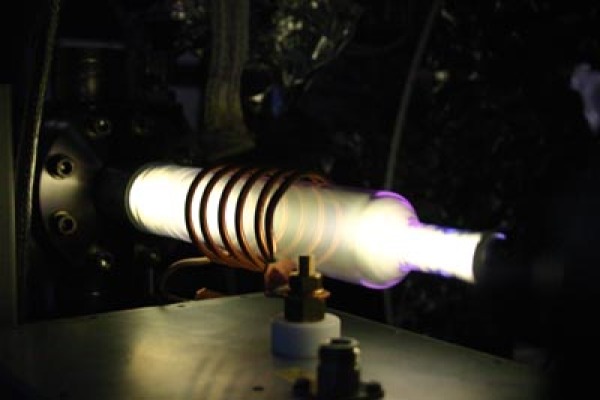UHV Ferromagnetische Resonanz (FMR), in situ FMR, MOKE & SQUID
UHV Kammer
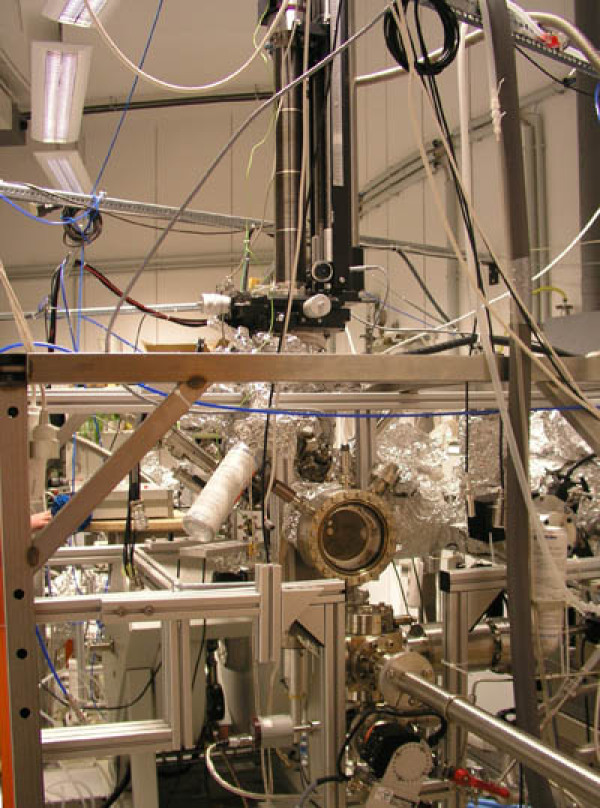
- UHV base pressure of < 1 * 10-10 mbar
- two independent systems
- Low energy electron diffraction (LEED) for surface structure characterisation, IV-LEED for measuring out of plane lattice parameter
- Auger-electron spectroscopy (AES) for chemical characterisation
- Hydrogen and Oxygen rf plasma cleaning (up to 200 W)
- Ar ion etching (100-3000 eV)
- automated temperature control in the range of liquid Nitrogen (77 K) up to 900 K with a stability of +/- 0.5 K
- electron beam evaporation of Fe, Co, Ni, Ag, Pt, Au, Al, Si, W (more possible) in the range from 0.1 nm to ten nm, using rods or crucibles.
- co-evaporation of up to four (normally two) materials, successive evaporation of up to eight (normally 4) materials
- changeable evaporator without breaking main vacuum
- in situ longitudinal magnetooptical Kerr-effect (MOKE) up to +/-120 mT
- in situ superconducting quantum interference device (SQUID)
- transferable sample holders
- in and out of plane angular dependent ferromagnetic resonance (FMR) measurements with cavities (1, 4 and 9 GHz) at fields up to 1.3 T
- in plane FMR from 1.5 to 26.5 GHz in continuous frequencies
- changeable cavities / continuous technique without breaking the main vacuum
- standard sample size: 3.9 x 3.9 x 0.5 mm³, other possible
Kontakt:
M. Farle
A. Semisalova
"Bender" UHV Kammer
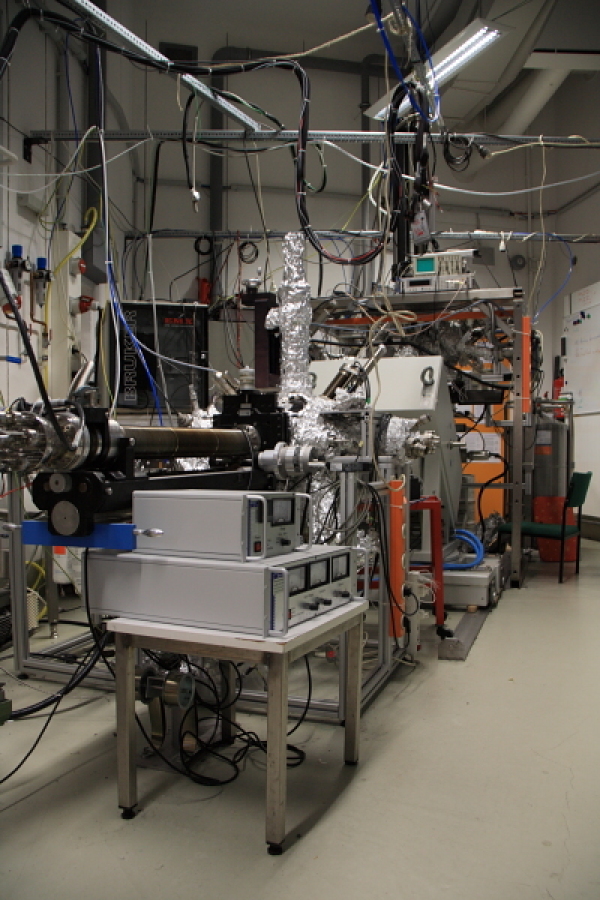
in situ MOKE
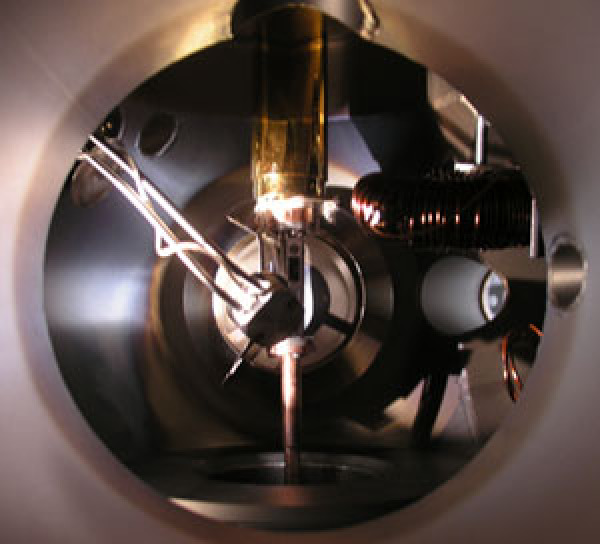
Wasserstoff-Plasma
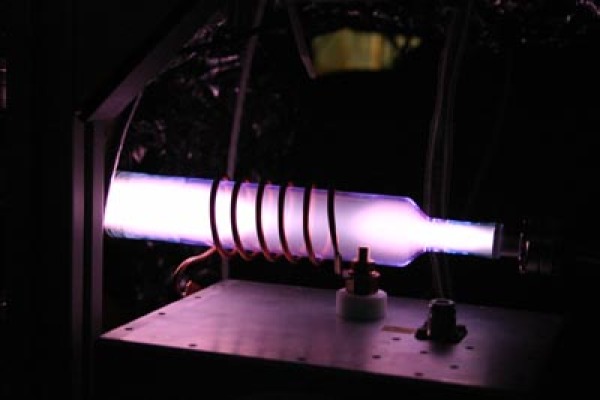
Sauerstoff-Plasma
